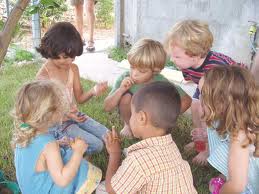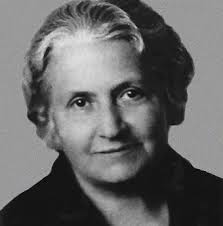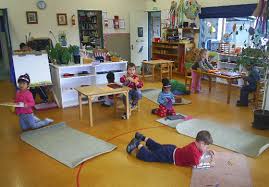Category: News
Fabulous Suggestions for Teachers
If you’re a teacher who wants to excite your students and teach them with meaning, this is the video to watch.
Waldorf Education
Rudolph Steiner was an Austrian philosopher who founded what is known as anthroposophy, a philosophy on which he based his experimental educational methodology on. He opened his first Waldorf School in 1919 in Stuttgart Germany. Today there are over 1,000 independent Waldorf schools, 2,000 kindergartens, 646 centers for special education within 60 countries.
Waldorf education is based on the premise that there are three main stages in child development, each stage lasting about 7 years. The first seven years are characterized by the need for creative play. The second stage, which corresponds to elementary school, focuses on the artistic expression and social abilities of the growing student. At this stage the focus is on nurturing creative and analytical ways of understanding. On the high school, or secondary level education deals with developing critical thinking with the goal of creative idealistic adults.
The global approach of Waldorf at every stage stresses the importance of the imagination for learning with a strong value placed on integrating practical, academic and artistic goals. The ultimate goal of Waldorf education is to produce free, morally responsible and well-integrated individuals who are highly socially competent.
Approaches to Co-Teaching
Co-teaching was designed to respond to the educational requirements of students with a variety of alternative options. There are a few different ways of co-teaching. Before signing up your child with an institution that offers co-teaching, take some brochures from the administrator at the reception desk to figure out which methods are being offered. There is the option of the observer when the teacher figures out ahead of time what type of observational data needs to be garnered during instruction. Thereafter a system for garnering that data is agreed upon and the teachers then analyze it together.
There is also the case where there is one individual who keeps main responsibility for teaching while the other one circulates around the room providing help where necessary. With the parallel teaching approach, students are helped by getting additional teacher supervision as well as time to respond. Teachers cover the same information but divide the class into two groups to teach them in separate groups.
With station teaching, teachers divide content and students. Alternative teaching has one teacher being in charge of the large group and the other, of the small group. Team teaching calls for both teachers to give over the same instruction at the same time. While this is sometimes seen as the most complicated way to co-teach, it is often also the most successful and satisfying.
Montessori Education
The Montessori educational method was established by a woman called Dr. Maria Montessori. Apart from this accomplishment, she was Italy’s first woman to get a physician’s degree while teaching a class of 50 poor students back in 1907. She had a background in working with special needs students and based her philosophy around the principle that children were not born as “blank slates,” but instead had absorbent minds that could engage in self-directed learning.
Thus she developed a new school framework. Rather than kids just learning from school desks, Montessori developed a revolutionary framework in her time. In her ideal learning environment, newly-empowered children would be able to choose how to spend their time in school, looking for opportunities to learn by themselves. The work she did was what led to the Montessori classroom that exists in both preschool and elementary schools today.
TEDxYouth Discusses Alternative Educational Ideas
Few programs convey ideas better than do the TEDx lectures. Hear from this young girl about alternative education as part of the TEDxYouth lectures.
Educational Strategies for Kids with ADD
Teaching kids with ADD/ADHD is not simple. In addition, there seems to be very little imagination in educational strategies and curricula to help either. One would suspect this would not be the case given that it is the schools that often give the ADD/ADHD labels in the first place. However, there has been little development of substantial creative techniques to try to help these students learn and behave better in the classroom.
Indeed, on a CH.A.D.D. “fact sheet” (America’s principal ADD/ADHD advocacy group) it was written: “Use the student’s first name before calling on him or her” (CH.A.D.D., 1994). I can only wonder, What was the teacher doing before this? Other suggestions are simply bland or obvious: “Display classroom rules,” “Allow more time to complete assignments or tests,” “Make eye contact with the student before calling on him or her or giving instructions.”
What is somewhat concerning about the inadequate amount of educational strategies in the ADD/ADHD field is that the opposite is the case for education in general. There are so many new learning styles, educational innovations and more that have spread to the field that it is quite disappointing next-to-none of this has spilled over into the more specific ADD/ADHD area.
Alternative Education: What Does It Mean?
Alternative education can mean many different things to different people. It can mean schools that teach in an alternative way to the traditional way that children are usually taught. It can me alternative evaluation methods than those that most schools have. One university, for instance, called Hampshire College, has individualized degree programs with evaluations instead of grades.
Alternative education might also mean home based learning. It can also mean lifelong learning opportunities, with opportunities for those who have finished the traditional years of education to continue learning.
It can also mean study abroad programs and cultural exchanges. There are often fair nights at school where they set out banquet tables and welcome students to learn more about these unique and enriching opportunities. There are also online based learning programs that allow you to learn in the comfort of your own home and to grow in this environment.
All of these choices can be seen as alternative education and all of them allow you, the student, to grow in interesting and unique ways. Learning does not have to fit into a box today – and individuals have the ability to branch out in so many different ways.
Why Montessori?
One very popular type of alternative education is the Montessori school. Most people have probably heard this term, even if they don’t know exactly what it means or entails. The Montessori method of teaching was started by Dr. Maria Montessori. She was the first woman in Italy to earn her physician’s degree and she developed a new educational model.
She used her method with folding tables and other basic supplies to teach 50 poor students near Rome in 1907. She did not believe that children were born as “blank slates” but that they were fully capable of self-directed learning. She believed that children needed long blocks of time when they could concentrate and the school allows for student-driven learning while the teacher is more of an observer.
She believed strongly in tactile learning and the classroom materials would include many items to touch and use. The method is one that is entirely non-competitive and has no grades, tests or other formal assessments.
Today, this method is used in about 5000 schools in the US and studies have found that students at these schools have higher levels of self-confidence, better social skills and better academic skills when they finish their early learning years here.
Banner Learning Corporation
Here is one example of an educational option for alternative education. At Banner, they have alternative education programs, therapeutic day options and more. As they explain on their website,
“Banner operates therapeutic schools for students with emotional, behavioral and learning disorders, as well as other disabilities. Banner’s therapeutic program is designed specifically for students who are generally considered the most challenging to educate. Banner welcomes these students and takes great pride in educating them. Banner’s innovative special educational program instills confidence and builds the competence of each of its students. Banner works closely with the school district to insure that each student’s Individualized Education Program (IEP) is fully satisfied. Banner employs an IEP compliance officer. The IEP compliance officer’s primary function is to monitor IEPs and see that each and every requirement is met. The IEP compliance officer maintains close contact with the district’s special education staff.”
There are many choices that allow the family to make the best educational decision for their needs.




